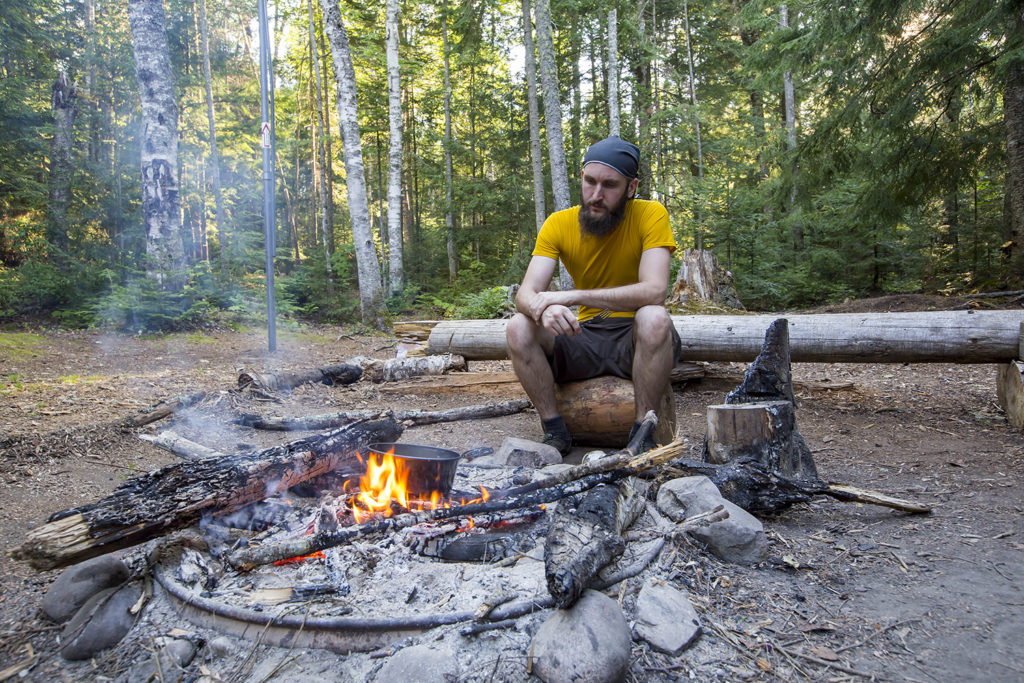Warmer days are coming and with it, people will be looking at resuming their outside activities. Whether you’re hitting the trails, spending a weekend camping, or participating in other forms of outdoor recreation, it is extremely important to know and practice Leave No Trace.
Leave No Trace is a set of principles that exists specifically to protect the environmental impact people have while they are enjoying the beauty of nature. They were designed to protect trails and natural areas from damage, prevent water pollution, reduce the risk of wildlife injury, and avoid destructive fires.
The 7 Principles of Leave No Trace
1 – Plan Ahead & Prepare
Know what to expect by planning your trip and doing the research necessary to properly prepare yourself for the area. Doing so can help prepare you for dealing with the unexpected.
Some of the things I look at when planning a camping trip or hike include:
- Special regulations for the area
- Current trail conditions
- Potential problem areas that I will encounter on a trail
- Weather
- Wildlife and the recommended way to handle wildlife encounters
- Visual markers on the trail
- Nearest town or location for help
2 – Travel & Camp on Durable Surface

Stay on the trail.
Trails are built with a purpose. Prior to construction, areas were assessed and built on the locations where the land could handle the foot traffic with limited damage to the natural area.
There are some exceptions when you start looking at backcountry camping and disperse camping. In these situations, use your best judgment and find areas where you leave the least amount of impact. Don’t trample large areas of vegetation when there are better options available.
Hiking on muddy trails damages the trail and requires more maintenance. Avoid trails during and after spring melt when they are extremely muddy. Some state trails close entirely during this time of year to help preserve the trail.
3 – Dispose of Waste Properly
Don’t litter.
If you “pack it in, pack it out”. Carry your trash with you until you can find a trash can to properly dispose of it.
Human waste should be properly disposed of by digging a cat hole. Cat holes should be:
- Be AT LEAST 200 feet from water, trails, and camp
- An area where people will be unlikely to walk or camp
- 6 to 8 inches deep and 4 to 6 inches in diameter
- Be covered and disguised with natural materials when finished
The third type of waste is wastewater. Doing dishes? Washing your hands? Any water used for washing should be at least 200 feet away from streams or lakes. Avoid using soap, if possible.
4 – Leave What You Find

The Cairns that most people build because they “think they are cool” violate this principle. This popular activity is disrespectful and extremely inappropriate in 99% of uses.
Keep nature wild.
Avoid alternating anything. Don’t change the environment. Leave it as is. This will reduce the environmental impact and provide that same “untouched” appreciation for people to visit in the future.
5 – Minimize Campfire Impacts
Campfires are an iconic symbol of camping. However, especially in the backcountry, fires should be minimized to as needed only and should be kept as small as possible.
Avoid damaging trees or cutting anything green to use as firewood.
Backpacking stoves are a better alternative because they are fast, flexible, eliminate firewood usage, can safely operate in most weather conditions, and leave no trace.
In established campgrounds and in some backcountry camp spots, existing fire rings are available and should be used.

When we hiked Pictured Rocks National Lakeshore, the backcountry campgrounds had community firepits to reduce the number of fires.
6 – Respect Wildlife

A simple principle that is often ignored.
Do not disturb wildlife or plants. Observe them from a distance. These are wild creatures and should be given respect and space. Do not feed them. Do not engage with them in ways that are considered unsafe. Your actions could cost the life of someone or something else.
Even chipmunks.
7 – Be Considerate of Other Visitors
Maintain courtesy toward other visitors. Nature is to be enjoyed in its fullest potential.
Leave excessive noise & music at home. Keep your pets controlled on a leash. Be pleasant to others.
In addition to being courteous, a personal belief of mine is that by saying hello to those you pass on the trail, you draw attention to yourself. If something were to happen to you, this individual may remember you and help in bringing you home safely and vice versa.
Let’s Talk Trail Etiquette shares ways of how to be a better trail visitor.
Leave No Trace
Following Leave No Trace will ensure the enjoyment of the outdoors for everyone now and for the generations to come. Respect nature, the trail, and everyone using the trail.
For more information, visit Leave No Trace.

Leave a Reply